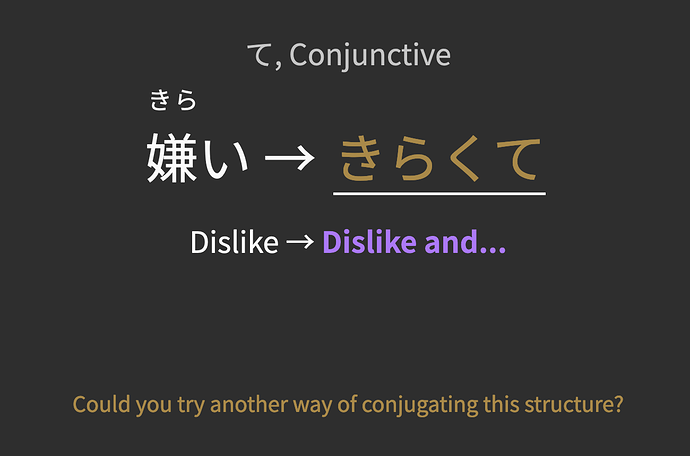[て-form]
and…
conjunctive
Structure
- い-Adj.[ て ] → おもしろ
い→ おもしろく て- な-Adj.[ で ] → しずか → しずか で
- Noun[ で ] → 先生 → 先生 で
- Exception: いい → よく て
[With its meaning being well approximated with the English “and,” the て-form’s basic function is to connect clauses, sentences, verbs, etc.]
[Depending on context (the relationship between connected clauses), the meaning can be further specified to express: a sequence of actions, a reason/cause, a means/manner of doing something, requests, and actions in parallel states]






